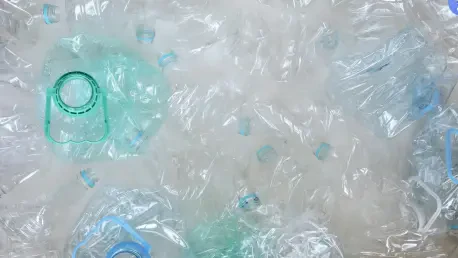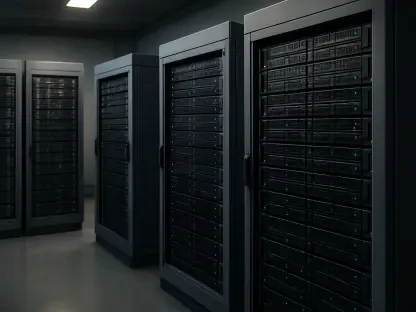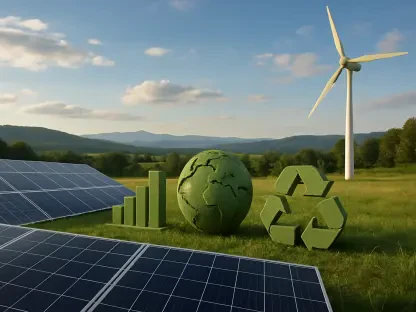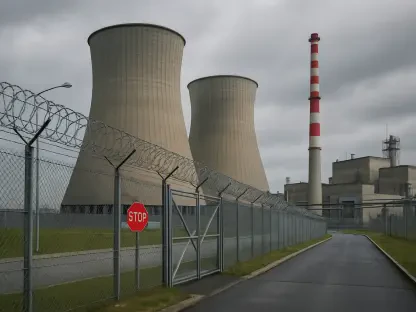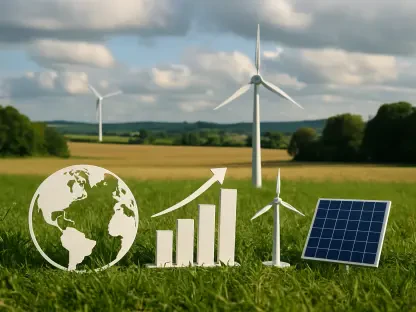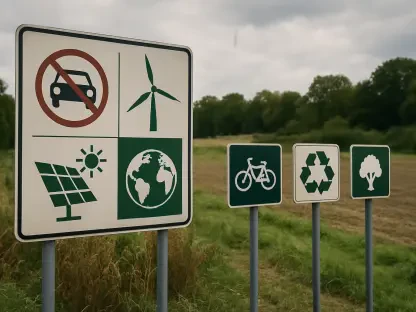Imagine a sprawling Canadian farm, where plastic containers and grain bags pile up after each harvest, posing a silent threat to the environment, and with thousands of tons of agricultural plastic waste generated annually, the challenge of managing this material sustainably has never been more pressing. This roundup dives into the efforts of Cleanfarms, a Canada-based organization headquartered in Etobicoke, Ontario, to tackle this issue head-on. By gathering perspectives from industry stakeholders, farmers, and recycling experts, the discussion aims to uncover how Cleanfarms is driving progress in agricultural plastic recycling and what lessons can be drawn from their strategies.
Unpacking Cleanfarms’ Role in Plastic Waste Management
A Milestone in Collection Volumes
Cleanfarms has emerged as a key player in addressing agricultural plastic waste, with recent data showing a significant achievement of collecting over 10,000 tons of plastic scrap in a single year. Industry observers note that this volume reflects a nearly 10 percent increase compared to the previous benchmark, signaling a robust upward trend in recycling efforts. This growth is seen as a testament to the organization’s ability to mobilize resources and engage farming communities effectively.
Feedback from agricultural associations highlights that the national three-year average recovery rate for small containers (under 23 liters or 6 gallons) stands at an impressive 81 percent, while bulk containers have reached 62 percent. These figures are often cited as evidence of a maturing system that prioritizes both quantity and consistency. However, some regional coordinators point out that challenges like improper material preparation can still hinder efficiency at certain collection points.
A common concern among logistics experts is the disparity in recovery rates across different areas, with some regions struggling to match the national averages due to limited access to collection sites. Despite this, many agree that Cleanfarms’ focus on data-driven tracking offers a blueprint for addressing these gaps. The consensus leans toward scaling up education campaigns to ensure uniform participation.
Regional Highlights and Their Broader Implications
Provincial successes have caught the attention of many in the recycling sector, particularly in Alberta, where small container collection hit 456 metric tons in a recent cycle, marking a 9.6 percent rise from prior figures. Farmers in the region often credit localized support networks for making drop-off processes seamless, a view echoed by collection site managers who emphasize the value of tailored outreach.
In Saskatchewan, the grain bag recovery rate of 69 percent has been hailed as a standout achievement by environmental advocates. They argue that this success stems from strong community buy-in and efficient coordination among stakeholders. Such regional wins are frequently discussed as models that could inspire underperforming areas to adopt similar grassroots strategies.
Yet, some analysts caution that scaling these localized efforts nationally may face hurdles, such as varying infrastructure capabilities or differing levels of farmer engagement. Opinions differ on whether a one-size-fits-all approach can work, with a few suggesting that customized regional plans might yield better long-term results. This debate continues to shape discussions on how to replicate success without losing momentum.
Collaboration as a Cornerstone of Success
Stakeholder Partnerships Driving Change
Across the board, industry voices stress that collaboration remains central to Cleanfarms’ impact, with farmers, recyclers, and site operators forming a vital network. Agricultural consultants often point out that farmers’ diligence in preparing materials for collection—such as cleaning and sorting plastics—directly boosts recycling rates. This hands-on involvement is seen as a critical piece of the puzzle.
Recycling value chain experts add that streamlined operations at collection and processing stages are just as important, though they note regional variations in efficiency. Some regions benefit from well-established systems, while others lag due to logistical constraints. A recurring suggestion is to invest in training programs to standardize practices across diverse areas.
A point of contention arises when discussing the sustainability of current partnership models. While many stakeholders praise the existing framework, a few express concern that without fresh approaches—such as digital tools for coordination—the system might struggle to handle growing volumes. This sparks a broader conversation about adapting to evolving demands.
Forward-Looking Strategies for Enhanced Recycling
Looking at current initiatives, Cleanfarms’ plans to expand outreach to more farmers have garnered positive feedback from sustainability advocates. They view this as a proactive step to increase participation, especially in underserved regions. The emphasis on prioritizing easily recyclable materials also resonates as a way to enhance overall system efficiency.
Policy analysts, however, offer a nuanced perspective, suggesting that while outreach is essential, it must be paired with incentives or regulatory support to ensure lasting change. Some propose that innovations like mobile collection units could address accessibility issues, though opinions vary on the cost-effectiveness of such measures. The dialogue often circles back to balancing ambition with practicality.
A shared sentiment among industry watchers is that success in recycling shouldn’t be measured solely by volume but by the quality of materials processed. This shift in focus is gaining traction, with several experts advocating for metrics that reflect environmental impact over sheer numbers. Such insights are shaping how future programs might be designed.
Key Lessons from Diverse Perspectives
Synthesizing the range of opinions, it’s evident that Cleanfarms’ achievements—such as surpassing the 10,000-ton collection mark and achieving high recovery rates across plastic types—stand as benchmarks for the industry. Farmers and stakeholders frequently mention the importance of proper preparation of plastics as a practical tip for boosting program effectiveness. This hands-on advice is often paired with calls for greater awareness at the community level.
Environmental groups also underscore the power of regional successes, like those in Alberta and Saskatchewan, as proof that targeted efforts can yield national benefits. Their input often includes recommendations for replicating these models through localized training and resource allocation. This perspective highlights the adaptability required in a diverse agricultural landscape.
Another recurring theme is the need for ongoing collaboration, with many voices urging stakeholders to maintain open communication channels. Suggestions for improvement include leveraging technology to track and manage collections more efficiently. These actionable ideas provide a roadmap for enhancing engagement at every level of the recycling chain.
Reflecting on a Sustainable Path Forward
Reflecting on the insights gathered, it was clear that Cleanfarms had built a strong foundation for managing agricultural plastic waste through impressive collection volumes and strategic partnerships. The discussions with farmers, industry experts, and advocates revealed a shared commitment to sustainability that had driven tangible results across Canada. Each perspective added depth to the understanding of what worked and where challenges persisted.
Moving forward, a critical next step involves amplifying outreach to ensure no region is left behind, potentially through mobile collection solutions or incentive programs. Exploring partnerships with tech innovators to streamline logistics could also address scalability concerns that surfaced in the conversations. These considerations point to a dynamic future for recycling initiatives.
Beyond immediate actions, there’s an opportunity to influence broader environmental policies by sharing these lessons with policymakers and other sectors. Encouraging cross-industry learning could spark new ideas for managing waste sustainably. This path, built on collaboration and innovation, offers a promising way to tackle the enduring challenge of agricultural plastics.
